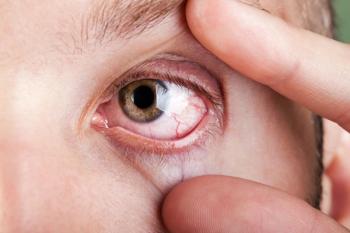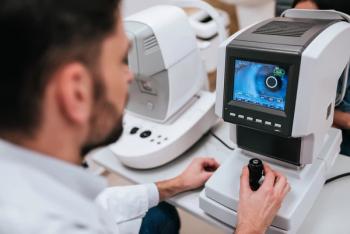
Study demonstrates Lumenis's DMSt effectivity in addressing lower lid laxity, improving blinking quality
The study explored the use of DMSt, used in OptiLIFT, in enhancing eyelid muscle function, improving blink dynamics, and consequently alleviating dry eye symptoms.
A recent clinical study has identified Lumenis’s Dynamic Muscle Stimulation technology (DMSt) as effective in addressing lower lid laxity and improving eye blinking quality in patients with
“The results of our study underscore a significant advancement in how we manage dry eye disease by addressing a common underlying contributor—lower lid laxity,” said James Chelnis, MD, FACS, lead author of the study and an oculofacial plastic and reconstructive surgeon at Manhattan Face & Eye, in the release. “Lumenis’s Dynamic Muscle Stimulation (DMSt) empowers practitioners by offering a method of treating the structural elements contributing to ocular surface disease – a method that supplements and enhances our ability to effect root causes of our patients’ symptoms. And for patients, this innovation represents a significant step forward in care and symptom relief.”
The study explored the use of DMSt, used in OptiLIFT, in enhancing eyelid muscle function, improving blink dynamics, and consequently alleviating dry eye symptoms. Involving 30 patients with lower lid laxity and moderate to severe DED, the study administered 4 weekly DMSt treatments. Outcomes were documented at follow-up, which occurred 1 month after the fourth treatment.1
Results demonstrated that the proportion of subjects displaying normal Lower Lid Distraction Test results increased from 3% at baseline to 80% at follow-up, indicating a reduced lower lid laxity. Additionally, 93% of patients demonstrated normal Snap-Back results at follow-up in comparison to 30% of patients at baseline. This also indicates reduced lower lid laxity. A large majority (93%) of patients demonstrated normal blink rate at follow-up, compared to 37% at baseline. Another dramatic improvement was in normal blinking quality, which spiked to 73% of patients at follow-up from 0% at baseline. A 78% decrease in modified Meibomian Gland Score was identified over the course of treatment, which indicates improved meibomian gland function. Notably, a 286% increase in tear break-up time was documented over the course of treatment, indicating tear film stability/dry eye severity. Finally, a 53% decrease in Ocular Surface Disease Index was noted over the course of treatment.1,2
Study authors also noted the possibility for DMSt is improvement in blood flow, in addition to a reduction in lower lid laxity containing the potential to improve efficiency of blinking and improving tear film stability.2
“DMSt reduces lower lid laxity and helps to improve blink quality, meibomian gland function, and dry eye symptoms,” the study authors stated. “Unlike 2 other technologies in this space – [intense pulsed light and radiofrequency] – this technology can help address deficits in eyelid position and movement, particularly useful for older patients or those with floppy or mispositioned eyelids.”
Some of the limitations in the study noted by researchers included the lack of preliminary estimation of size effect, the study not being powered, no control group included, exploratory outcomes like blink quality and blink rate being qualitatively estimated by a study investigator, a small sample size, and modest follow-up duration.2 “Further studies with larger sample size, longer follow-up, control group, additional sites and quantitative measurements of blinking rate and quality are needed to better evaluate the merits of this novel approach, to better understand the mechanism of action, and to demonstrate the advantage of dynamic over static electrical stimulation,” the study authors stated.
References:
Clinical study demonstrates benefits of Lumenis Dynamic Muscle Stimulation technology in managing lower lid laxity and blinking quality. Lumenis. August 11, 2025. Accessed August 13, 2025.
Chelnis JG, Chelnis A. Dynamic muscle stimulation of the periorbital area for improvement of blinking in dry eye patients. Clin Ophthalmol. 2025;19:1057-1071.
https://doi.org/10.2147/OPTH.S513989
Newsletter
Want more insights like this? Subscribe to Optometry Times and get clinical pearls and practice tips delivered straight to your inbox.





